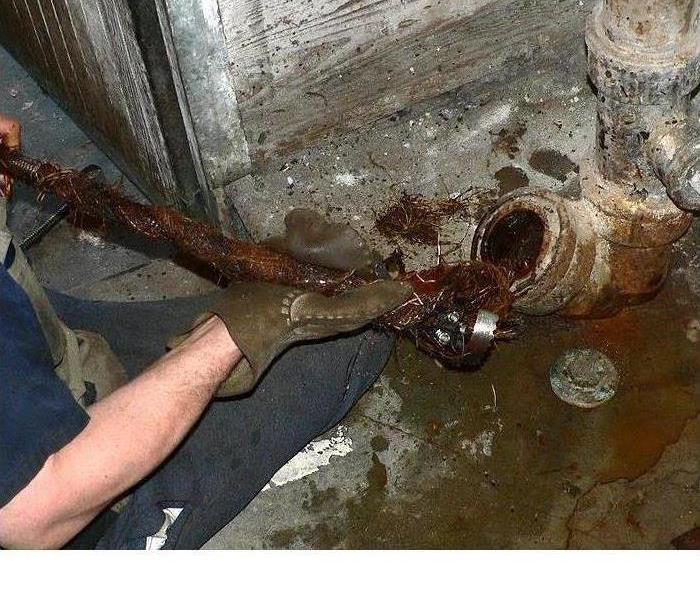Sewer Backup and prevention tips
6/26/2019 (Permalink)
Backed up sewers can wreak havoc on a home, causing thousands of dollars in damage to floors, walls, furniture and electrical systems. Sewer backup coverage is available from most insurers for a nominal cost—usually an additional annual premium of $40-$50.
For homes that have been severely damaged and are uninhabitable, homeowners policies may provide Loss of Use coverage, which provides reimbursement for lodging, food and other living expenses you may incur as a result of having to live outside of your home. Loss of Use coverage also reimburses you for the lost rental income if you rent out part of the house.
Causes of Sewer Backup
Aging Sewer Systems: The Civil Engineering Research Foundation reports that the number of backed up sewers is increasing at an alarming rate of about 3 percent annually. In addition, a recent report from the American Society of Civil Engineers indicates that the nation's 500,000-plus miles of sewer lines are on average over thirty years old. The increase in the number of homes connected to already aging sewage systems has also contributed to rapid increases in sanitary sewer backups, flooded basements and overflows.
Combined Pipelines: Problems also arise in systems that combine storm water and raw sewage into the same pipeline. During many rain storms, the systems are exposed to more volume than they can handle, and the result is a sewage backup situation that allows sewage to spew out into basements and other low lying drains.
Blockages Due to Tree Roots: Shrubs and trees seeking moisture will make their way into sewer line cracks. These roots can cause extensive damage. They may start out small, getting into a small crack in the pipe; but as the tree or shrub continues to grow, so does the root. Tree roots can enter the service pipe at joints and cause blockages. Tree roots can travel a long way, and roots from different types of trees act differently. If city trees are suspected, your plumber can contact the city, and samples of the roots will be used to help identify the trees and who is responsible for cleanup. Sometimes the blockage is a result of a combination of city and private trees. In this case costs are split between the city and the property owner.
Sanitary Main: A blockage can occur in a city sanitary main. If the blockage is not detected in time, sewage from the main can back up into homes and businesses through floor drains. Usually this happens slowly, giving the owner time to call a licensed plumber to assess the damage. If water is entering into your basement at a rapid rate, call the city public works office and report the problem immediately.
Water in Basement: Most basement flooding is not related to the sanitary sewer system. In many cases, soil settles adjacent to the building and, if not corrected, leads to rainwater flowing towards the building and down the outside of the foundation wall. This is particularly true in older buildings, where cracks may have developed in the foundation or floor slab that allow water to enter the basement. The cement floor and basement walls of these structures may have deteriorated to the point that they are no longer waterproof. In these cases, water can show up in a basement that has never had a water problem. This will usually happen after a number of rain storms, when the ground is saturated. Drainage can be improved by making sure that water drains away from the building. Owners may also be able to prevent flooding by water sealing the basement.
Most homeowners may not realize that they are responsible for the maintenance and repair of their house or sewer lateral—the pipeline between the city sanitary sewer main, usually located in the street—and the building. The sewer lateral is owned and maintained by the property owner including any part that extends into the street or public right of way. A cracked or deteriorated lateral or one filled with tree roots can allow groundwater to seep into the system, contributing to the problem.






 24/7 Emergency Service
24/7 Emergency Service
